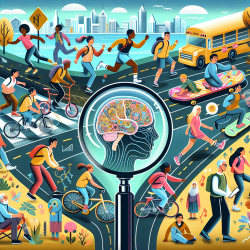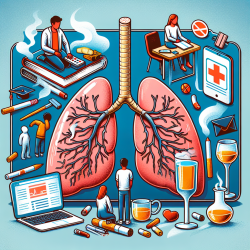Introduction
In the realm of speech-language pathology and child development, the quest for enhancing mental health outcomes is paramount. A recent study published in the International Journal of Clinical and Health Psychology sheds light on an intriguing correlation: active school travel (AST) and reduced suicide attempts among adolescents in low- and middle-income countries (LMICs). This blog explores how practitioners can leverage these findings to foster better mental health outcomes for children.
Understanding the Research
The study analyzed data from the Global School-based Health Survey, encompassing 127,097 adolescents aged 13-17 years across 34 LMICs. The findings revealed that adolescents engaging in AST—walking or cycling to school—were less likely to attempt suicide, with a prevalence of 9.2% compared to 12.9% among those who did not engage in AST. This suggests that AST may serve as a protective factor against suicide attempts, irrespective of gender.
Implications for Practitioners
For practitioners working with children, these findings underscore the importance of promoting AST as part of a holistic approach to mental health. Here are some actionable steps:
- Advocate for AST Programs: Encourage schools and communities to implement safe and accessible AST programs. This could involve creating safe walking paths or cycling routes and educating parents and students about the benefits of AST.
- Integrate AST into Therapy Goals: Consider incorporating AST into individualized therapy plans, especially for children exhibiting signs of depression or anxiety. Regular physical activity can enhance mood and overall well-being.
- Collaborate with Stakeholders: Work with educators, policymakers, and urban planners to create environments conducive to AST. This collaboration can lead to sustainable changes that benefit children's mental health.
Encouraging Further Research
While the study provides valuable insights, it also highlights the need for further research. The association between AST and suicide attempts varied significantly across countries, suggesting that cultural, social, and environmental factors play a role. Future studies should aim to:
- Explore the mechanisms through which AST influences mental health, including the role of social interactions during travel.
- Examine the impact of different types of AST (e.g., walking vs. cycling) on mental health outcomes.
- Investigate the long-term effects of AST on mental health and its potential to prevent suicide attempts.
Conclusion
The research on AST and its association with reduced suicide attempts offers a promising avenue for improving adolescent mental health. By integrating AST into therapeutic practices and advocating for supportive policies, practitioners can contribute to creating safer, healthier futures for children. For those interested in delving deeper into the study, the original research paper can be accessed here.










